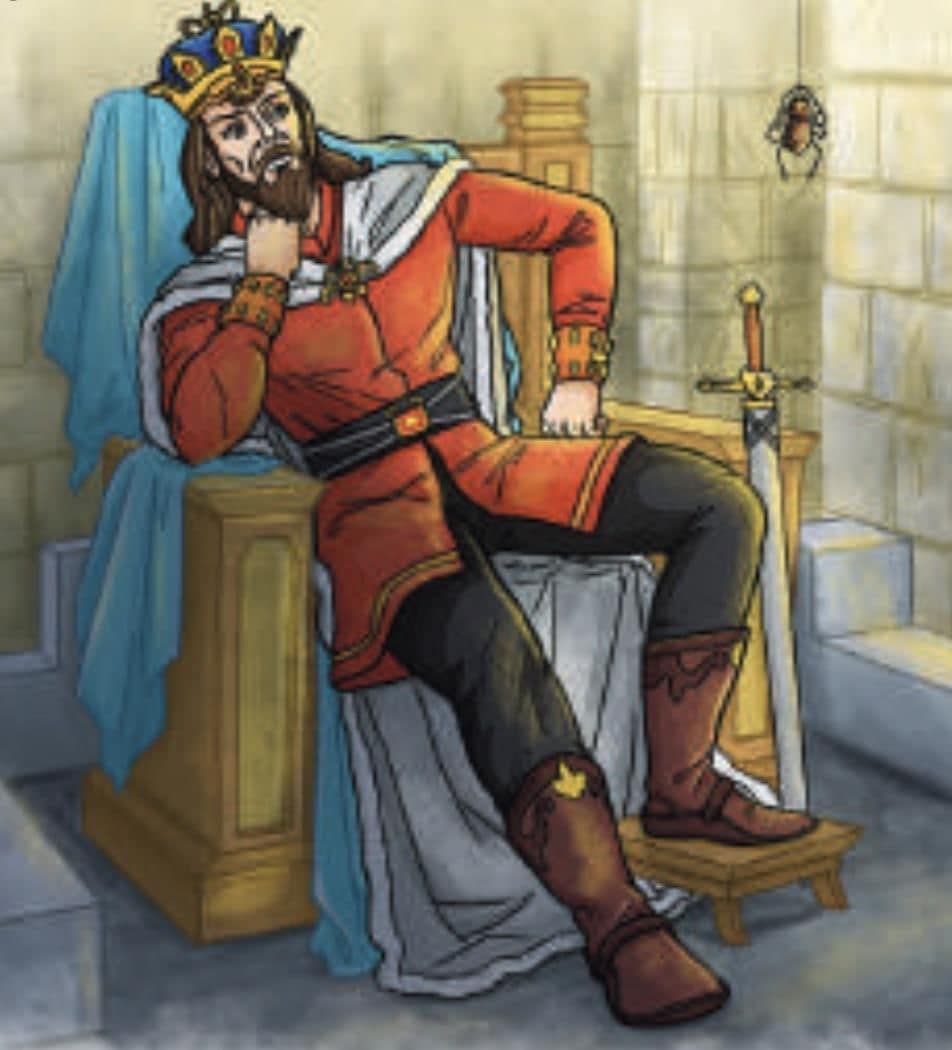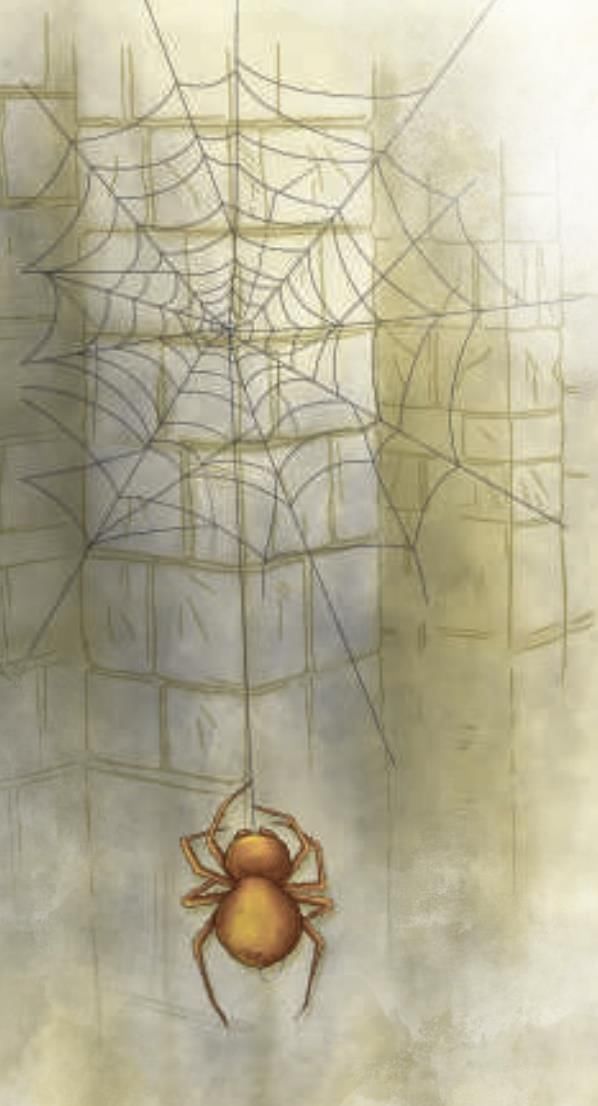Important Questions: Try Again | English Poorvi Class 7 - New NCERT PDF Download
Q1: Who is the main character in the poem ‘Try Again’?
a) King Robert
b) King Bruce
c) King James
d) King Edward
Answer: b
Explanation: The poem focuses on King Bruce, describing his feelings of despair and how he gains inspiration from a spider.
Q2: Why is King Bruce feeling sad in the first stanza?
a) He lost his crown
b) His heart was beginning to sink
c) He was sick
d) He was angry
Answer: b
Explanation: It says that though he was a monarch and wore a crown, his heart was beginning to sink, showing his sadness.

Q3: What does King Bruce want to achieve for his people?
a) Build a palace
b) Win a war
c) Do a great deed
d) Find a treasure
Answer: c
Explanation: It states he had been trying to do a great deed to make his people glad.
Q4: What distracts King Bruce from his thoughts?
a) A bird
b) A spider
c) A soldier
d) A river
Answer: b
Explanation: A spider drops near him, and he stops thinking to see what the spider would do.

Q5: How many times does the spider attempt to climb before succeeding?
a) Six
b) Seven
c) Nine
d) Ten
Answer: c
Explanation: The poem counts nine brave attempts before the spider finally reaches its web.
Q6: What does the spider use to climb to its web?
a) A rope
b) A silken thread
c) A ladder
d) A vine
Answer: b
Explanation: The spider climbs using a delicate silken thread described as a "silken, filmy clue."
Q7: What word does King Bruce use to praise the spider’s success?
a) Great
b) Bravo
c) Well done
d) Amazing
Answer: b
Explanation: When the spider reaches its web, King Bruce exclaims "Bravo, bravo!" to praise its effort.
Q8: What does King Bruce learn from the spider?
a) To build a web
b) To give up easily
c) To keep trying despite failure
d) To avoid challenges
Answer: c
Explanation: Seeing the spider succeed after many falls inspires him to try again instead of giving up.
Q9: What does the word ‘toils’ mean in the poem?
a) Rests
b) Works hard
c) Plays
d) Falls
Answer: b
Explanation: The poem uses ‘toils’ to describe the spider working hard to climb to its web.
Q10: What is the moral of the poem?
a) Success comes without effort
b) Never give up despite failures
c) Kings should rule alone
d) Spiders are clever
Answer: b
Explanation: The ending shows King Bruce resolving to keep trying after witnessing the spider’s repeated efforts and success.
Q11: Why is King Bruce described as a monarch with a sinking heart?
Answer: King Bruce is a monarch, meaning he is a king, but his heart is sinking due to his sadness and despair from failing repeatedly to achieve a great deed for his people.
Q12: What does the spider do after falling the first time?
Answer: After falling, the spider tries again immediately without resting or complaining, climbing back up the thread with strong effort.
Q13: Why does King Bruce initially think the spider is foolish?
Answer: King Bruce calls the spider foolish because it keeps falling after working hard to climb, and he believes it will give up due to repeated failures.
Q14: Define the word ‘endeavour’ and give an example from the poem.
Answer: Endeavour means a strong effort to do something. An example is the spider’s persistent climbing of the silken thread despite falling multiple times.
Q15: How does the spider finally reach its web?
Answer: The spider climbs steadily, inch by inch, and makes a bold final effort, described as a “bold little run,” to reach its cobweb home.
Q16: Describe King Bruce’s emotional journey in the poem and how the spider influences it.
Answer: King Bruce starts off very sad and lonely, even though he is a king, because he has failed many times to do something important for his people. He feels so hopeless that he decides to quit, saying, “I’ll give it all up.” Just then, he notices a spider trying to climb a thin thread. It falls nine times but keeps trying without stopping. At first, Bruce thinks the spider is foolish for not giving up. But when the spider finally succeeds on its tenth try with a “bold little run,” he feels inspired. He cheers, “Bravo, bravo!” and realises that if a tiny spider can keep trying and succeed, so can he. This gives him new strength to try again, and he finally succeeds. The spider changes his feelings from sadness to hope, teaching him to never give up.
Q17: Explain the spider’s role in the poem and how it serves as a symbol of persistence.
Answer: The spider plays an important role in the poem, helping King Bruce change and showing the power of not giving up. It appears when Bruce feels most hopeless and catches his attention as it tries to climb a thin silken thread to its web. It falls nine times, described as a “slippery sprawl” and “dizzy and faint,” but keeps climbing “steadily, inch by inch” until it finally reaches its web on the tenth try with a “bold little run.” This is like Bruce’s own struggles, as both fail many times but keep trying. The spider’s determination gives Bruce the courage to try again and succeed. It stands as a sign of strength and persistence, proving that even small creatures can achieve great things through effort, and teaching that never giving up leads to success.
Q18: Discuss the moral of the poem and its relevance to overcoming challenges in life, with examples.
Answer: The poem’s lesson is that persistence and strength help overcome difficulties, as success comes from trying again even after failing. The spider’s nine falls and final success motivate King Bruce to try once more and win, showing that failures can lead to success if one keeps going. This applies to life, where many problems need repeated effort. For example, a student who fails a math test can study more and try again, improving like the spider’s steady climbs. Likewise, athletes like P.V. Sindhu, who lost matches but trained hard to win Olympic medals, show this idea. The poem encourages finding motivation in small efforts, like the spider’s, to stay strong. By showing that failure is not the end, it inspires people to face school, personal, or work challenges with determination, building a mindset of progress and strength.
Q19: Why is perseverance important, inspired by King Bruce’s story?
Answer: Perseverance in the poem is important because it helps people overcome problems and reach their goals, like when the spider keeps climbing and inspires King Bruce to try again and succeed. It shows that failures are chances to learn and improve if we keep trying. For students, perseverance is needed in studies, especially when facing tough subjects or low marks. Like King Bruce, they can keep practising, such as solving math problems every day despite mistakes, and get better over time. By not giving up, students become stronger, do well in studies, and gain the confidence to face future challenges, helping them grow as individuals.
|
55 videos|465 docs|76 tests
|
FAQs on Important Questions: Try Again - English Poorvi Class 7 - New NCERT
| 1. What is the main theme of the article "Try Again"? |  |
| 2. How does the article suggest overcoming failure? |  |
| 3. What examples from history are mentioned to illustrate the importance of perseverance? |  |
| 4. How can the lessons from the article be applied in daily life? |  |
| 5. What role does support from others play in the journey of trying again? |  |

















